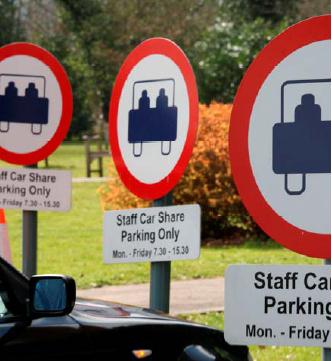
Lift sharing schemes are either 'closed' or 'open'. Closed systems are sometimes referred to as ‘private groups’.
Many on-line lift sharing websites offer both open and closed systems. An open system is one which anybody can use to find a possible lift sharer for the journey they want to undertake, whilst a closed system is restricted to a pre-defined set of possible users. In reality, the distinction between open and closed groups can become quite blurred especially when a closed group has a large number of possible users and/or general members of the public can join. For example, a hospital lift sharing scheme might be 'closed' but still be available for use by patients and visitors.
The main advantage of an 'open' lift sharing system is that the volume of people and therefore the chance of finding a match is likely to be greater. The main disadvantage is that you're more likely to be travelling with strangers. This can obviously raise security fears.
Conversely, a closed system is restricted to a pre-defined group of potential users. This ‘group’ can be whatever is felt to be appropriate, for example, it might be a single employer or a group of employers based in the same geographical area.
The main disadvantage of closed groups is that the potential volume of lift sharers can be quite small and there could be less chance of finding a match. On the other hand a smaller group, especially one that is only open to one organisation could significantly reduce fears about sharing with a stranger.
On-line websites such as www.liftshare.com will set up a closed, private group for an organisation or group of organisations for a fee. The fee level is generally set by the number of employees working for the organisation(s). The greater the number of employees, the higher the fee.